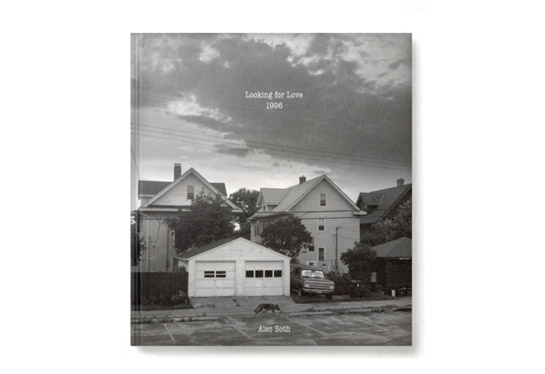Review (of sorts): Looking for Love, 1996 by Alec Soth

One of my favourite Neil Young albums is the 1975 Zuma, which features, amongst other gems, a song entitled Lookin’ For A Love. It’s a quintessential Neil Young song if there ever was one: Who else could possibly get away with writing something that’s so far north of being sappy, without being offensive to one’s sensibilities? This might be a hard concept to grasp for today’s younger generation, who are so used to everything being ironic (or fake ironic) that the idea of something being sappy without the escape mechanism added must seem… I don’t know. How do you react to the world if all you know (and cling to) is irony?
That tangent aside, I’m really bad at remembering lyrics, and Lookin’ For A Love might be the only song whose lyrics I know in its entirety. They start off as follows: “I’ve been looking for a lover / But I haven’t met her yet / She’ll be nothing like / I pictured her to be / In her eyes I will discover / Another reason why / I want to live / and make the best / of what I see.” There is no way you could possibly express this in any other way than putting it to music, given all the registers you can pull there, including the harmonies in the vocals and the minor chords in the final part of the chorus that deals with “the darker side of me.”
Of course, love has long been a topic for all types of artists. Love is the most obvious topic to put all those frequent demands for artistic originality to rest: Who needs originality when there’s love or a lack of love or a desire for love or someone looking for love? That well-known story, shared by us all, never gets old. It can be told in all kinds of ways, it probably has already been told in all kinds of ways, yet we yearn for more: The act of telling a story about love is just as much about love as love itself. (Might we not say this about photography as well?)
Alec Soth’s Looking for Love, 1996 is not the artist’s first book dealing with love. Before, there was Niagara. There were also all the references in Sleeping by the Mississippi. Compared to those two earlier books, this new one is different, in a variety of ways. For a start, its images were photographed before Soth became one of today’s most well-known photographers.
However, while the images might have been photographed 16 years ago, the book was made recently. Photobooks are always products not just of their photographers, but of their editors as well (look at William Eggleston’s Guide, say, and you’ll see the hands of curator John Szarkowski). In the case of Alec Soth’s Looking for Love, 1996, we have Misha Kominek, the publisher, plus Alec Soth, the photographer, the 2012 photographer. Who knows what a 1997 version of the book would have looked like?
Unlike the earlier books, this one is photographed exclusively in black and white - much like the photographer’s current work, which now also involves using a heavy-duty flash. So all those differences between earlier and this work might just be red herrings, in particular since the imagery in this new book at times matches the 8x10 work Soth became known for and the current, digital photographs (the 2012 editors’ hands?).
Alec Soth’s Looking for Love, 1996 is, in other words, just like a Neil Young album where you never know what you get, except that it always sounds like Neil Young. Alec Soth might simply be photography’s Neil Young. Sleeping by the Mississippi was Harvest, and the Little Brown Mushroom Dispatches are Old Ways. These kinds of comparisons only make so much sense. But to stick with this one just a little longer: I’m tickled by the idea of an Alec Soth version of Ragged Glory.
Looking for Love, 1996; photographs by Alec Soth; 56 pages; Kominek; 2012